
Mateo Zimmermann, Investment Manager at CEMEX Ventures
With +15 years of professional experience, Mateo has an engineering and management background, that helps him seek solutions to enhance productivity in the construction industry through innovation and technology.
Modular construction is on the brink to becoming one of the many topics in the construction sector that will help foster an industry revolution by reimagining the way building has been done until today.
The global market value for modular construction was set at $87.6 Million (USD) in 2021, and under moderate assumptions, it’s expected to reach the $130 billion (USD) in Europe and United States alone by 2030.
Northern countries like Finland, Norway and Sweeded account for 45% of the offsite housing market share, with Asia coming second thanks to the availability and widespread adoption of the technology. In the region, China leads with over 7,000 prefab manufacturers in the country, and Japan reports that nearly 20% of new housing is done using modular construction. In Europe, countries like United Kingdom and Spain are starting to bet on industrialized construction methods.
On this article, we´ll even take a closer look using practical examples from the startups Modulous (UK and US) and Wallex (Spain). Discover how they work with modular construction and how these solutions compare to one another to better understand the various elements that encompass each solution.
Let´s dive in!
What is Modular Construction?
Since the 1900s the desperate need to deliver new housing quickly introduced modern methods of construction into the mix (MMC). These methods focus on the use of off-site construction techniques that can benefit from factory conditions and mass production techniques. As one of the most popular solutions, we encounter modular construction.
The Modular Building Institute describes modular construction as a process in which a building is constructed off-site, under controlled plant conditions, using the same materials and designed with the same codes and standards as conventionally built facilities – but in about half the time. Buildings are produced in “modules” that when put together on site, reflect the identical design intent and specifications of the most sophisticated site-built facilities – without compromise.
What’s the difference between Modular Construction, Offsite Construction and Prefab vs Industrialized Construction?
Offsite construction refers to the manufacturing of building components in a factory. It’s similar to Prefab, although Prefab is the historical terminology, associated with low quality housing solutions.
Modular construction falls under the offsite construction umbrella but is often referred to as a specific building system of volumetric units. We believe the real disruption comes with “Industrialized Construction”, which does not only refer to the fabrication of building components and systems in a factory, but also relies on Process and Technology Enablers to make it lean, automated, and efficient.
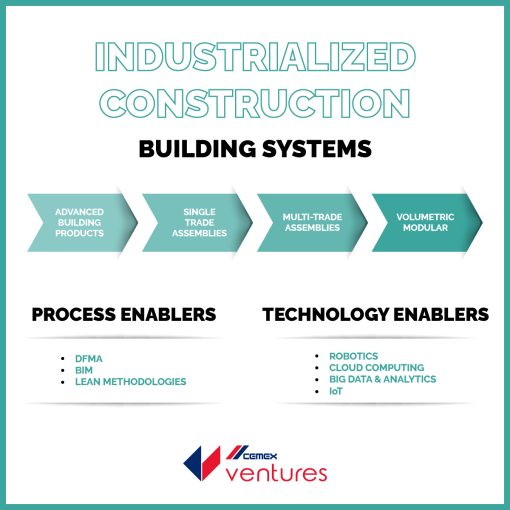
The origins of modular construction
Although modular construction has been gaining traction in the construction technology ecosystem in recent years, the origins of the technology date back to the 1800s. With the first prefabricated house built in London in the second decade of the century, the trend has been making the rounds ever since. But what made construction professionals from back in the day look for modern construction methods?
As it´s been stated time and time again, construction has lacked innovation for many decades, and as other industries evolve, the challenges that we face in the sector continue to pile up. When it comes to modular construction, this technology tackles plenty of the biggest pain points in modern day construction:
Housing shortage and affordable housing
According to the United Nations, 1.8 billion people do not have a decent home to live in. Not only is the growing city population a danger to the accessibility of decent housing, but in recent decades, the percentage of the urban population living on informal settlements with insufficient security or tenure has grown.
It’s expected that by 2050, almost 68% of the world´s population will live in major cities, so it is critical that the housing crisis is resolved in the coming years. Traditional construction can’t keep up to close the gap.
But building more homes won’t solve the associated issue that comes with housing: rent and buying prices for new homes have skyrocketed in the last years, with almost 70% of low-income families in United States spending more than half of their income in rent alone.
Lack of skilled workforce
For too long, having a job on the construction site has been considered a trade that does not require qualification, a professional outlet for those who do not want to train themselves, and the industry is no longer attractive to young people.
In October 2021, 402,000 construction positions remained unfilled at the end of the month, the second-highest level recorded since data collection began in December 2000.
With lack of skilled workforce and an aging group of workers in the sector, the industry needs to make itself more attractive for younger students and other profiles to get involved with the new technologies emerging in the industry.
Sustainable Construction
Given its nature, building material accounts for half of the solid waste generated every year worldwide. Moreso, construction and operation buildings are also responsible for 39% of Greenhouse gas emissions. As regulations worldwide call for a more sustainable industry, new solutions in the market must help current building professionals tackle this issue and find ways to enforce circularity with building materials, as well as focus on sustainable materials and energy efficiency of buildings.

Delays and Overruns
With traditional construction methods, who exude inefficiency and have seen a flat growth in productivity numbers in the last decades, a project can take many months to complete, with the norm being that large projects take 20% longer than expected and adding up to 80% in cost overruns over the initial budget.
Quality
Construction quality is a critical factor that directly affects the growth of construction business and naturally, its profitability. Plenty of the construction defects can be directly attributed to human factors like an unskilled workforce and lack of proper supervision. Likewise, system failures and low-quality construction materials add to the lack of quality of some projects.
The rise of modular construction
With the construction industry facing plenty of challenges from decades ago, like a history of being wasteful, inefficient, and unsustainable, a widespread skilled labor shortage and industry productivity rates continually declining, modular construction presents itself as a breath of fresh air (and plenty of opportunity).
The modular construction market is projected to be worth $130 Billion (USD) by 2030 in Europe and USA, and has the potential to deliver annual savings of up to $22 billion. Factors such as the adoption of advanced lean manufacturing techniques and the growing infrastructure investment are expected to boost the adoption of the modular construction globally.
Traditional construction companies and investors from the industry have started betting on offsite solutions for the sector as they start to see the benefits and look for ways to improve their business models.
Companies like Bouygues, VINCI, CEMEX, Skanska, etc and investors like Softbank, Tiger Global, Koshla Ventures, Fifth Wall, etc are getting into the modular construction train and including solutions of these liking into their current portfolios.
Government Support for Modular Construction
Although the benefits to incorporate modular construction today are tangible, professionals from the industry are calling for more government support, both financially through grants and subsidies for developers using modular technologies, and through planning and regulation policy incentives.
In Europe, for example, to achieve targets regarding sustainability and climate neutrality, digitization and a more robust industry, the European Union has launched NextGenerationEU, the largest stimulus package ever. Industrialized Construction should be positioned because it is very aligned with Europe’s goals.
This support will not only accelerate adoption of the technology, but it will also lead to more market expansion of currently available solutions and see a wave of new solutions emerge inspired by government backing tactics.
For example, Wallex, Spain´s first industrialized construction factory, is part of an important government initiative, Plan VIVE, which aims to deliver affordable housing (BtR) in a timely manner in various regions of Madrid. This agreement happened within the first year of the factory´s opening, an important milestone for any new company in the sector, and a reflection of the needs in the market for solutions like this one.
It´s also important to call for industry standards and warranties like the ones existing for traditional building methods. This can provide certainty and confidence for housebuilders, suppliers, investors, and end-users.
Lack of asset-light offsite construction solutions
The recent pandemic has prompted companies in all sectors to consider asset-light strategies to fuel growth and strengthen financial performance. Yet, construction is not known for embracing these strategies.
Asset-light offsite construction solutions work similarly as a documentation processing software would: process incoming information, standardize it, and deliver the output in a prescribed format.
Startups like Modulous are starting to implement this strategy into their business approach, which helps digitize and standardize many construction processes. Their aim is to achieve true digitization with a transformative and scalable end-to-end construction enabled by a software platform by integrating offsite construction, decentralized supply chain partnerships, generative design, and local assembly into a single ‘digital thread’.

What’s preventing the scalability of Modular Construction?
There are a few factors that are slowing down the adoption of Modular Construction.
Cyclical market
Industrial businesses are normally related to heavy investments in fixed assets (factories, equipment, machinery, etc.). In a very cyclical market like construction, this becomes a liability. Industrial manufacturing emphasizes supply chain efficiency, while construction calls for supply chain flexibility.
A fully automated factory is counter-intuitive to the current dynamics of the industry, which is based on how you can adapt to all type of requirements and market volatility quickly.
Lack of standardization and high complexity
Industrial processes call for standardization to reach economies of volume and scale. But this calls for repeat processes and repeated production. For construction, it’s difficult to reach standardization if every project is completely new and has a low scale, like customized Accessory Dwelling Units (ADUs) and single-family homes.
Why don’t we think of breaking down the buildings into more repeatable elements, like integrated wall systems? It’s already done with cars (who are segmented into Tier 1, Tier2 and Tier 3 suppliers). Why are some modular building companies trying to do all complex components by themselves instead of relying on strategic and robust suppliers/partners?
Flexibility requirements of the market
Construction calls for high flexibility to adapt to hyper-local demand, high levels of customization, local codes, geological and climate condition, and socioeconomic factors. In order to cater to all these requirements, using a factory setting that is based on standardization and stability of demand can be very complex
High resistance to change and intrinsic risk aversion
The built industry is a complex and fragmented sector, with well-established players and already set dynamics. Changing construction processes, methodologies, and contractual frameworks takes plenty of time and effort. It’s not wise to try and change our industry from its roots, but rather we must try to help the existing ecosystem of players with collaboration and humility.
Lack of strategic alliances
Plenty of modular companies are trying to reinvent the wheel by developing their own building system, that needs to be assembled piece by piece in their own factories. Let’s take the example of Katerra.
The company tried to do so with self-sufficiency. Their theory was to do all by themselves through vertical integration and having a “higher degree of control over the process, increase standardization, reduce the number of parts and reduce complexity”. But physical vertical integration adds other issues and complexities.
Katerra did all things from re-development, to fabrication of all elements (including component and finishes, bathroom kits), to contracting, installation, etc. They believed they could change an entire high-complexity industry by owning and operating as much as possible themselves.
And more importantly, they thought they could do it better, smarter and with more resources than anybody else. Instead, they should have partnered with companies and people with vast experience in the sector, where the diversification of risk and the diversification of the single point of failure is key.
Lack of digitalization and tech adoption
We are in the era of digitalization, although construction is far behind. This applies as well to modular construction. Technology is an enabler for modular construction that most of the players have not embraced yet.
They rely on manual processes, pen and paper and lack communication tools, which does not allow for an integrated process from a design and manufacturing perspective, making it prone to errors.

What are the advantages?
Although there is still a long way to go before a worldwide adoption comes into place, Modular Construction serves to propel automation in the industry, from its integration with traditional physical tasks on-site, automation of modular construction in its production settings, and the digitization and subsequent automation of design, planning, and management procedures.
In modular construction factories, plenty of the job is still done manually, but over time, the process will become more automated, resulting in even faster deliveries and more adoption of the technology amongst contractors. If the trend continues showcasing its benefits, McKinsey estimates that about 15 to 20% of new building construction will be modular in the United States and Europe by 2030.
Main differences with traditional construction
Both traditional and modular construction begins in the same way: planning, design, approvals, site preparation and development are all required. But, they are not done the same way. With modular construction, users and built professionals have an end-to-end solution that puts a halt in the fragmentation from traditional construction. By connecting data flows, decentralizing supply chain, and rapid designs changes and approval rates, modular is the blessing in disguise.
For example, with traditional construction, the foundations are laid, structure and walls are built, roofs are added and then the interior of the building begins to be created, all happening sequentially. Before being delivered to the final customer, the snag list is prepared, and all issues are tackled. Only then is the building officially complete.
As for modular construction, while the foundations are being laid on site, manufacturing of the building is already taking place concurrently in a factory by skilled craftspeople, including interior and exterior finishes, electrics, plumbing and flooring. Before the building is delivered to the site, the snag-list has been already completed at the factory. The building is then transported, fixed in place and the keys handed over. This process reduces up to 50% of the time than traditional building methods (and the number could be even higher).
Moreso, modular construction answers the challenges traditional construction faces:
- Sustainable with better resource and waste management
Since industrialized and modular construction facilities benefit of production repetition, like assembly line manufacturing, the building process uses less energy than traditional construction.
Likewise, unlike onsite construction practices, resources are better handled, and the waste generated in these facilities are stored in a controlled environment that allows them to be recycled and used in other projects. In a factory-controlled environment, the waste is reduced by 20 to 40%. This helps reduce the 135 million tons of construction waste that ends up in landfills each year.
When it comes to sustainability, offsite, factory constructed houses leave a smaller footprint in terms of transport pollution, worker safety, reduced construction waste and urban noise.
An industry approach also offers the possibility on continuous improvement, especially in terms of climate impact.
- Faster building times
Because construction teams can work concurrently to groundworks and foundation works in controlled environments using repetitive techniques and convenient equipment, modular construction results in faster build times.
Weather delays don´t suppose a setback in times with modular construction either, so contractors can complete daily build goals and easily avoid delays that are common and unpredictable with onsite construction.
- A housing crisis solution
While modular construction alone will not solve the worldwide housing crisis, it is a step in the right direction as it allows for the speedy creation of buildings with a range of affordable specifications that include the basic need to turn a house into a home for anyone to live in.
Since modular homes are a freestanding structure with independent entrances, they can be built in a cluster or a stack formation if needed, supporting efforts to maintain and build community and maximize space available.
- Professionalized workforce
By getting industrialized construction in the mix, the modular industry can offer more predictable work locations and hours, less labor-intensive work, a higher degree of technology integration in the workplace, and much safer working conditions, making it more lucrative for potential new construction workers to embrace the industry.

Investing in the future of industrialized construction
The best way to explain CEMEX Ventures´ approach is by sharing and comparing examples of companies from our portfolio: UK and US based Modulous, winners of Construction Startup Competition 2020, and Wallex, our first joint venture together with a leading residential construction company in Spain.
Wallex: Lean and automated mass customization of high value industrialized building systems
Wallex is empowering contractors to build more efficient, higher quality, affordable and sustainable vertical buildings through industrialization and digitalization. As an integrated industrialized construction solution provider, Wallex focuses on an end-to-end process, from the design (DfMA) and engineering, manufacturing and on-site installation of the structure and façade of a building.
The building system is based on high-value structural and fully integrated façade and interior wall panels, formed by a concrete structure, insulation, cladding (internal and external), windows and services.
Wallex has a DfMA approach with its customers all the way from the conceptualization of the building design. The production of the structure is fully automated, based on the principle of mass customization. The assembly on-site is based on efficiency to speed up the process.
Modulous: Digital industrialized construction orchestrator
Modulous is digitizing the design process and reimagining industrialized construction to enable sustainable, affordable homes to be built more quickly and economically on a global scale.
To orchestrate the whole building delivery process, Modulous has developed a digital platform to coordinate the design in collaboration with the developers and contractors from the early conceptualization phase. This early engagement allows quick design, approval, procurement and supply chain for the delivery of multi-story residential buildings.
The generative design platform is based on Modulous’ building system, which is a kit of parts of sub-assemblies, components and elements from their strategic suppliers. The kit of parts is mostly pre-assembled by the suppliers and third parties, which allows local contractors to quick assemble and turn them into volumetric and fully finished units close to the final site without the need to own a fixed factory.
How Modulous and Wallex tackle construction industry’s pain points:
|
Pain Point |
Modulous |
Wallex |
|
Cyclicality of the market
|
An outsourced manufacturing and assembly process, allows to adapt to the demand of the market in terms of cyclicality and location.
The model can be scaled into different geographies, which has enabled them to have operations in UK and US at the same time with minimum investment.
At the same time, it’s a great alternative to help with the large housing demand, where offsite construction manufacturers and traditional construction can’t help. |
With the same product basis, Wallex is able to cater different end markets that help navigate through the cyclicality of the industry: · Build to Rent Residential · Build to Sell Residential · Student or Elderly housing · Hotels |
|
Standardization and complexity
|
With the development of their own kit of parts, Modulous can significantly reduce the design cycle, as well as the procurement, assembly and installation process. It’s about standardization of processes and reducing the design variables to significantly reduce complexity.
In just a few minutes you can have a conceptual design, which is really an execution design until the last bolt and screw. |
Based on a “mass customization” principle, Wallex always repeats the same manufacturing process in an automated production line, but every panel will be completely different. That’s how we reach standardization and scale.
If we add the manufacturing capability to the market, we also need to be very focused on components and systems that add value.
Focusing on mid-to large-scale buildings provides for more repeatability. |
|
Flexibility
|
Modulous approach is based on flexibility. On one side, the asset-light nature of not owning a factory allows to adapt to the cyclicality of the market and scale the company much faster. |
Wallex’s controlled factory environment allows for a reduction in the resources needed and waste generated in an on-site jobsite. |
|
Resistance to change and risk aversion
|
Modulous has also understood that in this industry you have to stand on the shoulders of giants, instead of replacing them.
Therefore, Modulous has been co-developing their building system with their strategic partners for pre-assembled walls, screeds, windows, wet walls, brick slips, just to name a few. |
Having a partnership with a large residential builder gives you a large pipeline and empowers the builder to build faster.
Instead of trying to change the industry dynamics, Wallex acts as an enabler. |
|
Strategic Alliances
|
The Modulous approach seeks to empower the builder to build better and faster. With the minimal R&D investment from builders, Modulous offers a unique building system that has been developed, tested and improved over the last years; an end-to-end process that goes from the design to the installation of volumetric units, whose result is a high quality, sustainable and affordable home.
Instead of replacing the contractor and the current market dynamics, by embracing the Modulous system, they are empowered. |
Wallex is part of a larger ecosystem of alliances between builders, top suppliers, software developers and all parties involved in a project. The ecosystem is called ÁVIT-A, where all players work together in a collaborative approach with a shared goals. It’s not a client-supplier relationship, but rather a partnership that includes the quality seal of all partners involved in the ecosystem. |
Wallex and Modulous benefits
Wallex
- 50% reduction in production times
- 30% reduction in delivery times
- 20% cost reduction compared to traditional construction methods
- Initial production capacity of at least 1,000 homes per year
- High quality prefabricated elements in a controlled facility
Modulous
- 50% faster than traditional design and construction methods
- 25% gross margins at maturity due to technology-centric and outsourced manufacturing & assembly approach
- Will deliver 40,000 homes in the United Kingdom in a 5-year timeframe
- Goal of maintaining zero carbon emissions and zero waste in its processes
By analyzing both companies and their data, we can expect modular and industrialized construction to continue evolving and see a surge in:
- Decentralized and offsite construction models
- Integrated and fully operational volumetric units ready to build in the project’s location
- Faster and wider variety of design models for clients to choose from
- Government support and aid for housing solutions in major cities
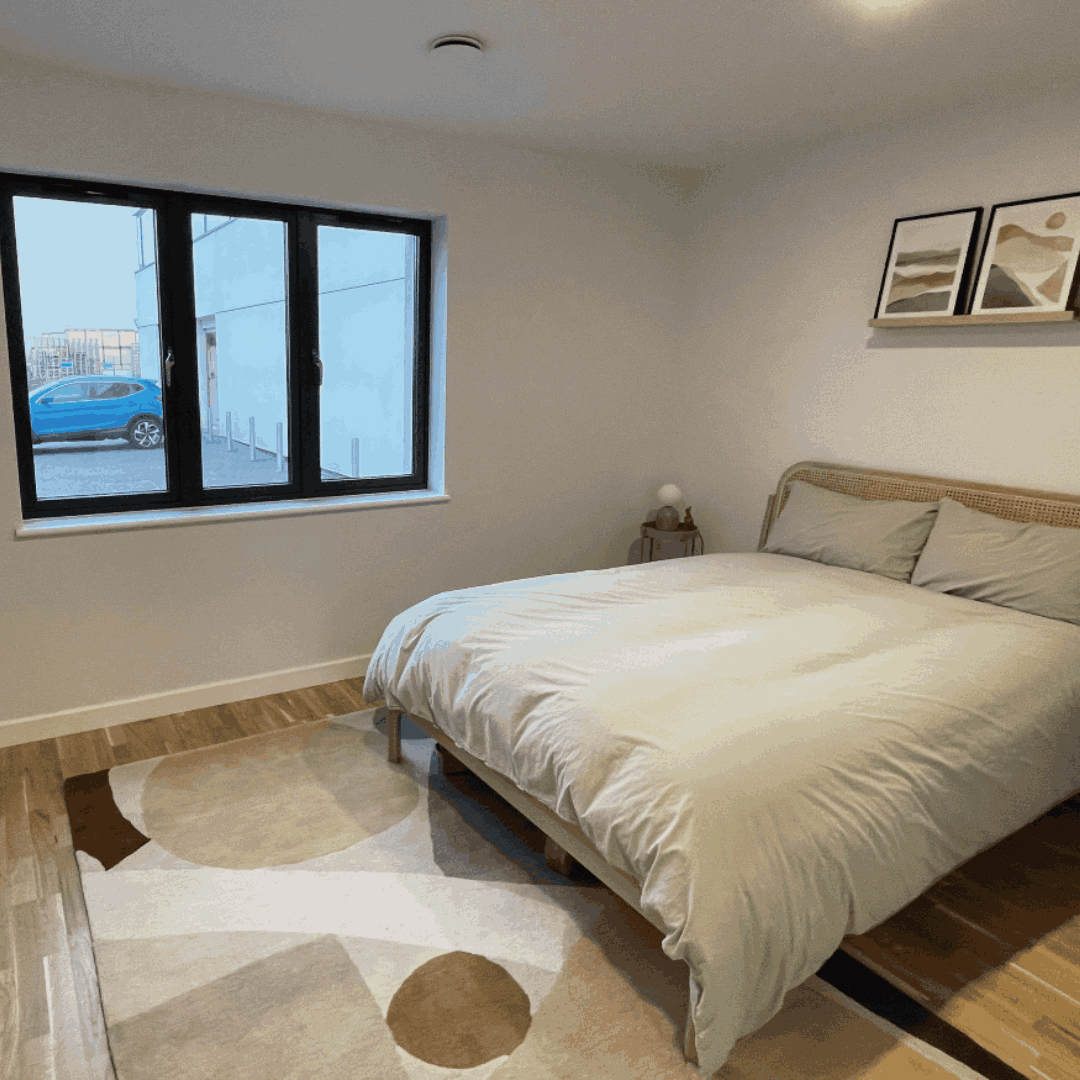
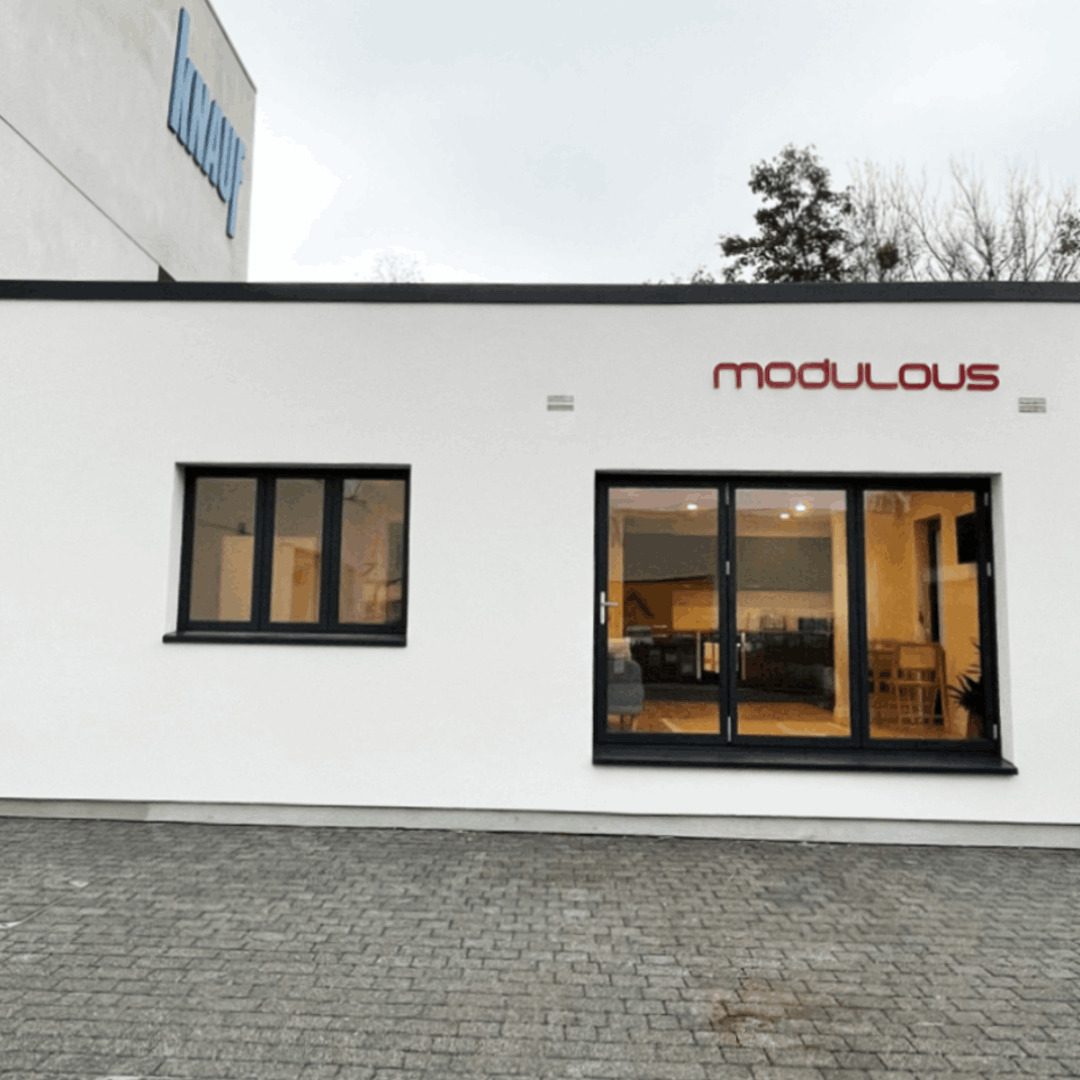
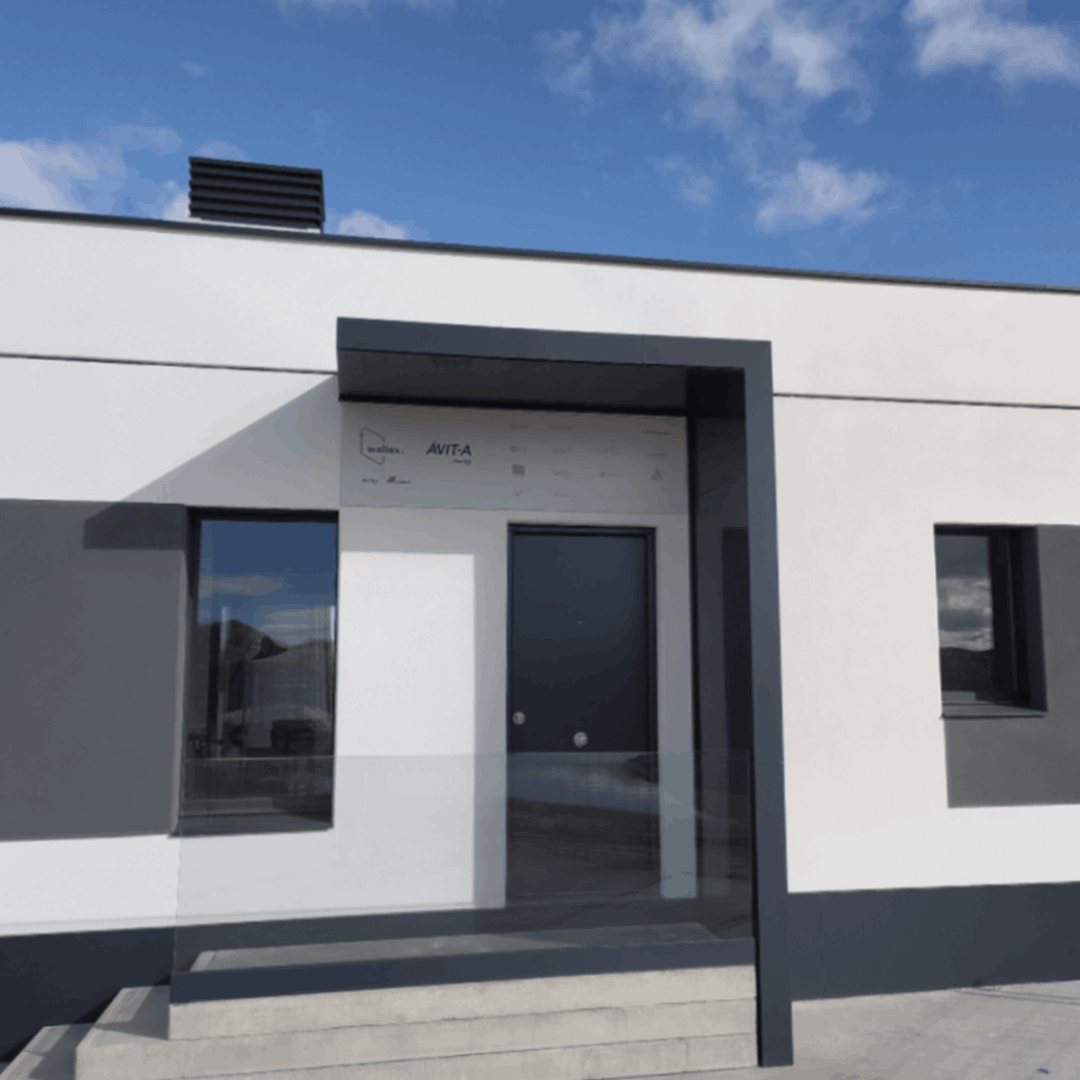
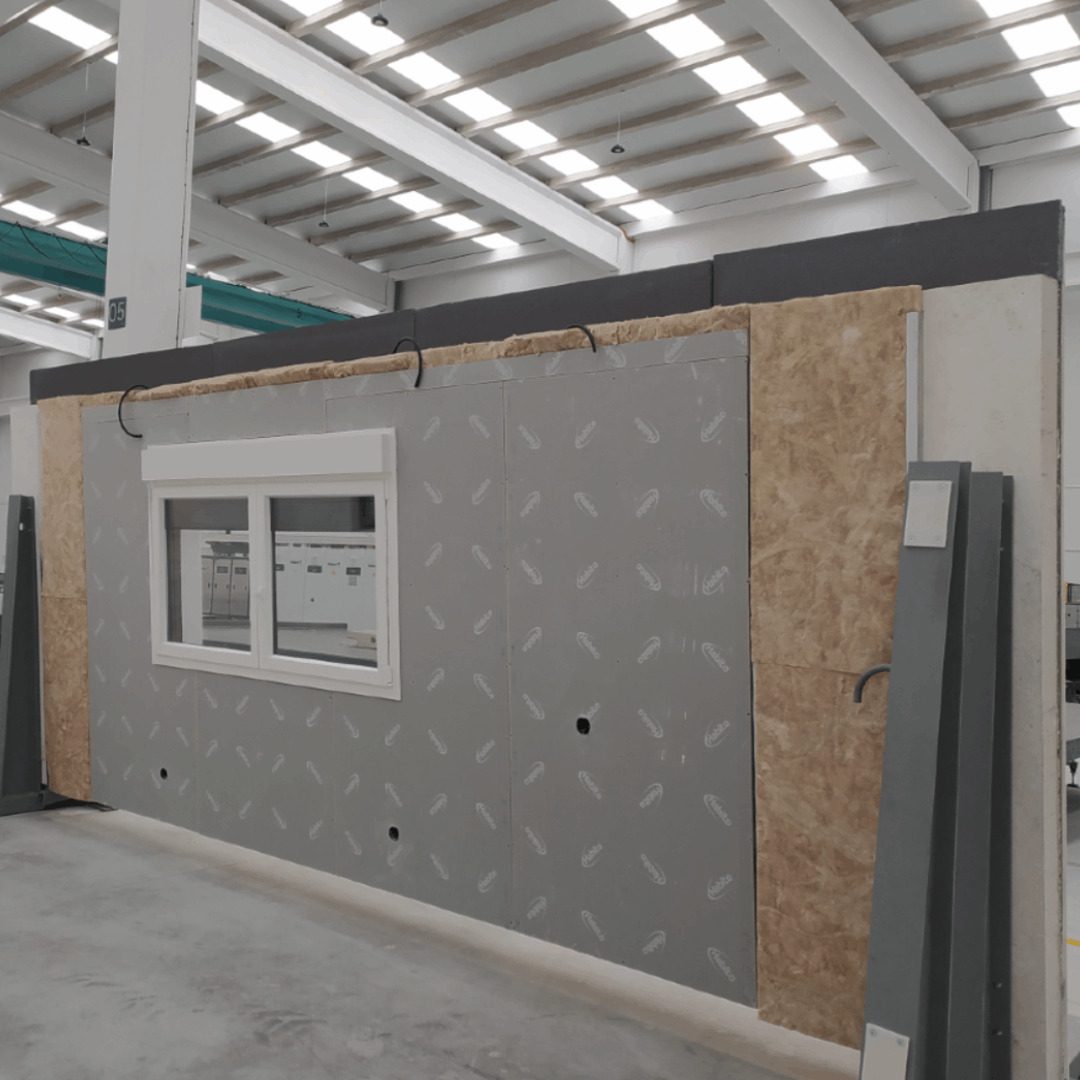
How CEMEX Ventures takes modular construction to a new level
On CEMEX Ventures, we bet on technologies and trends that can help solve the challenges in the construction industry; that has been our goals since 2017 and continues to be our main driver in every initiative that we do.
As we have seen modular and industrialized construction gain traction in the built environment and become both a viable and necessary solution for professional in the industry, we continue to seek for solutions that can help us build faster, more efficiently, with better use of resources, and incorporating innovative technologies in the mix.
Industrialized and modular construction address some of the most complex issues of modern building, like the declining productivity curve and the skilled labor shortage, long timelines, scaling difficulties, and volatility created by variable projects. Likewise, these methods use less construction materials than traditional approaches and are flexible enough to adapt to the current unique built challenges. By finding solutions that can help solve these challenges will help us drive more innovation into the industry and enhance its capabilities.
Betting on our own Wallex, and working hand in hand with Modulous, we see a great potential in the growth and adoption of the industrialized and modular construction solutions in multiple markets across the world. This trend, followed by all the benefits we previously highlighted, is only beginning to skyrocket, and while countries in Asia and Europe have been quicker in the adoption of this trend, North America is likely to see a surge in projects that include these technologies in the very near future.
With initiatives like the Construction Startup Competition, we make an open call to all startups with solutions regarding modular construction to apply and share their ideas and projects with us. We have the drive, network, and resources to help entrepreneurs really take their solutions to the next level and look forward to continuing doing so in the years to come.

